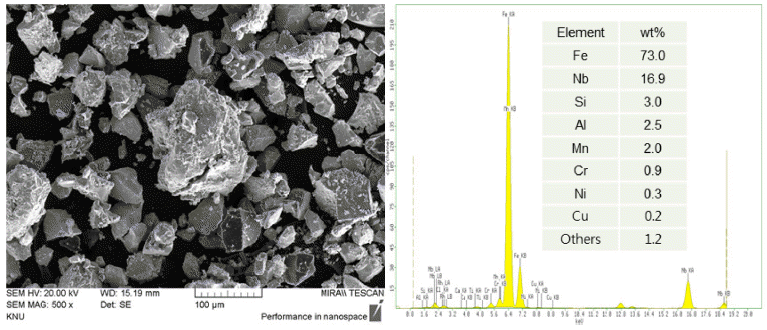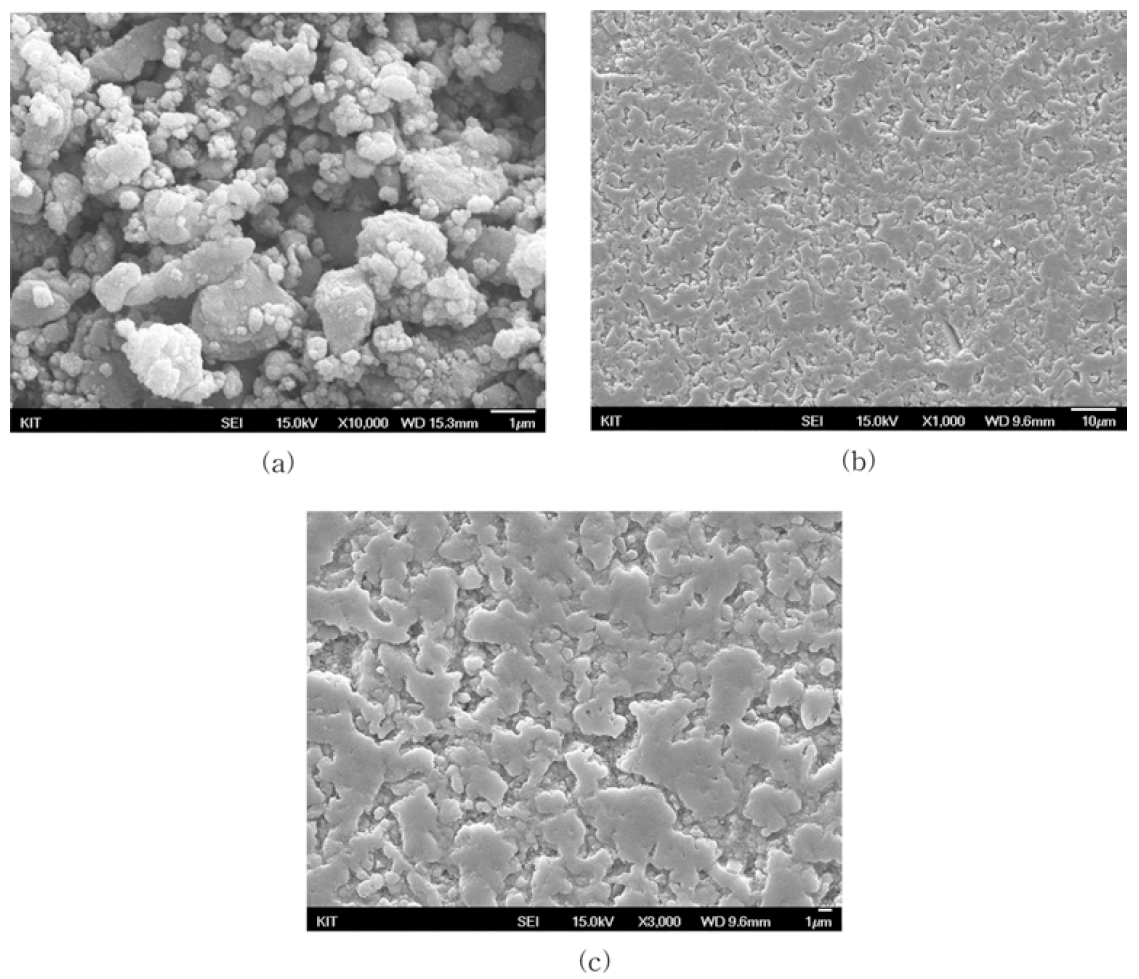Search
- Page Path
- HOME > Search
- [Korean]
- Microstructure and Characterization of Overlay Welding Layer using Fe-based Composite Powders
- Hong Min, Jong-Jae Lee, Jin Kyu Lee
- J Korean Powder Metall Inst. 2019;26(3):214-219. Published online June 1, 2019
- DOI: https://doi.org/10.4150/KPMI.2019.26.3.214

- 643 View
- 3 Download
-
 Abstract
Abstract
 PDF
PDF In this study, the microstructure and characterization of an overlay welding layer using Fe-based composite powders are reported. The effects of the number of passes and composition of powders on the microstructure and mechanical properties are investigated in detail. The welding wire and powders are deposited twice on a stainless-steel rod using a laser overlay welding process. The microstructure and structural characterization are performed by scanning electron microscopy and X-ray diffraction. The mechanical properties of the first and second overlay layers are analyzed through the micro-Vickers-hardness tester and abrasion wear tester. In the second overlay layer, the hardness and specific wear are approximately 840 Hv and 2.0 × 10−5 mm3/Nm, respectively. It is suggested that the increase of the volume fractions of (Cr,Fe)7C3 and NbC phases in the second welding layer enhances the hardness and wear resistance.
- [Korean]
- Consolidation to Bulk Ceramic Bodies from Oyster Shell Powder
- Kyeong-Sik Cho, Hyun-Kwuon Lee, Jae Hong Min
- J Korean Powder Metall Inst. 2016;23(3):221-227. Published online June 1, 2016
- DOI: https://doi.org/10.4150/KPMI.2016.23.3.221

- 1,246 View
- 9 Download
-
 Abstract
Abstract
 PDF
PDF Waste oyster shells create several serious problems; however, only some parts of them are being utilized currently. The ideal solution would be to convert the waste shells into a product that is both environmentally beneficial and economically viable. An experimental study is carried out to investigate the recycling possibilities for oyster shell waste. Bulk ceramic bodies are produced from the oyster shell powder in three sequential processes. First, the shell powder is calcined to form calcium oxide CaO, which is then slaked by a slaking reaction with water to produce calcium hydroxide Ca(OH)2. Then, calcium hydroxide powder is formed by uniaxial pressing. Finally, the calcium hydroxide compact is reconverted to calcium carbonate via a carbonation reaction with carbon dioxide released from the shell powder bed during firing at 550°C. The bulk body obtained from waste oyster shells could be utilized as a marine structural porous material.
- [Korean]
- Preparation of Ag Powder from AgNO3 by Wet Chemical Reduction Method1. The Establishment of Optimum Reaction System for the Preparation of Spherical Ag Powder
- Ki-Seok Yuna, Young-Chul Park, Beom-Seok Yang, Hyun-Hong MIn, Chang-Whan Won
- J Korean Powder Metall Inst. 2005;12(1):56-63.
- DOI: https://doi.org/10.4150/KPMI.2005.12.1.056

- 880 View
- 18 Download
- 1 Citations
-
 Abstract
Abstract
 PDF
PDF - Ag powder was prepared from AgNO_3 by wet chemical reduction method using various reduction agent system involving AgNO_3, AgNO_2(AgCl) and Ag complex ion aqueous solution. The pure Ag powder could be prepared regardless of reaction system but the particle shape and distribution were affected very much according to the kind of reduction agents and reaction systems. The optimum reaction system for the preparation of the silver powder having the uniform particle shape and size distribution was Ag complex ion aqueous solution-reduction agent system and in particular, H_2O_2 and C_6H_8O_6as a reduction agent leaded the more uniform particle shape and size distribution.
-
Citations
Citations to this article as recorded by- Effect of chloride ion on synthesis of silver nanoparticle using retrieved silver chloride as a precursor from the electronic scrap
Juyeon Yoo, Hyeongsub So, MinHo Yang, Kun-Jae Lee
Applied Surface Science.2019; 475: 781. CrossRef
- Effect of chloride ion on synthesis of silver nanoparticle using retrieved silver chloride as a precursor from the electronic scrap
TOP
 KPMI
KPMI


 First
First Prev
Prev


